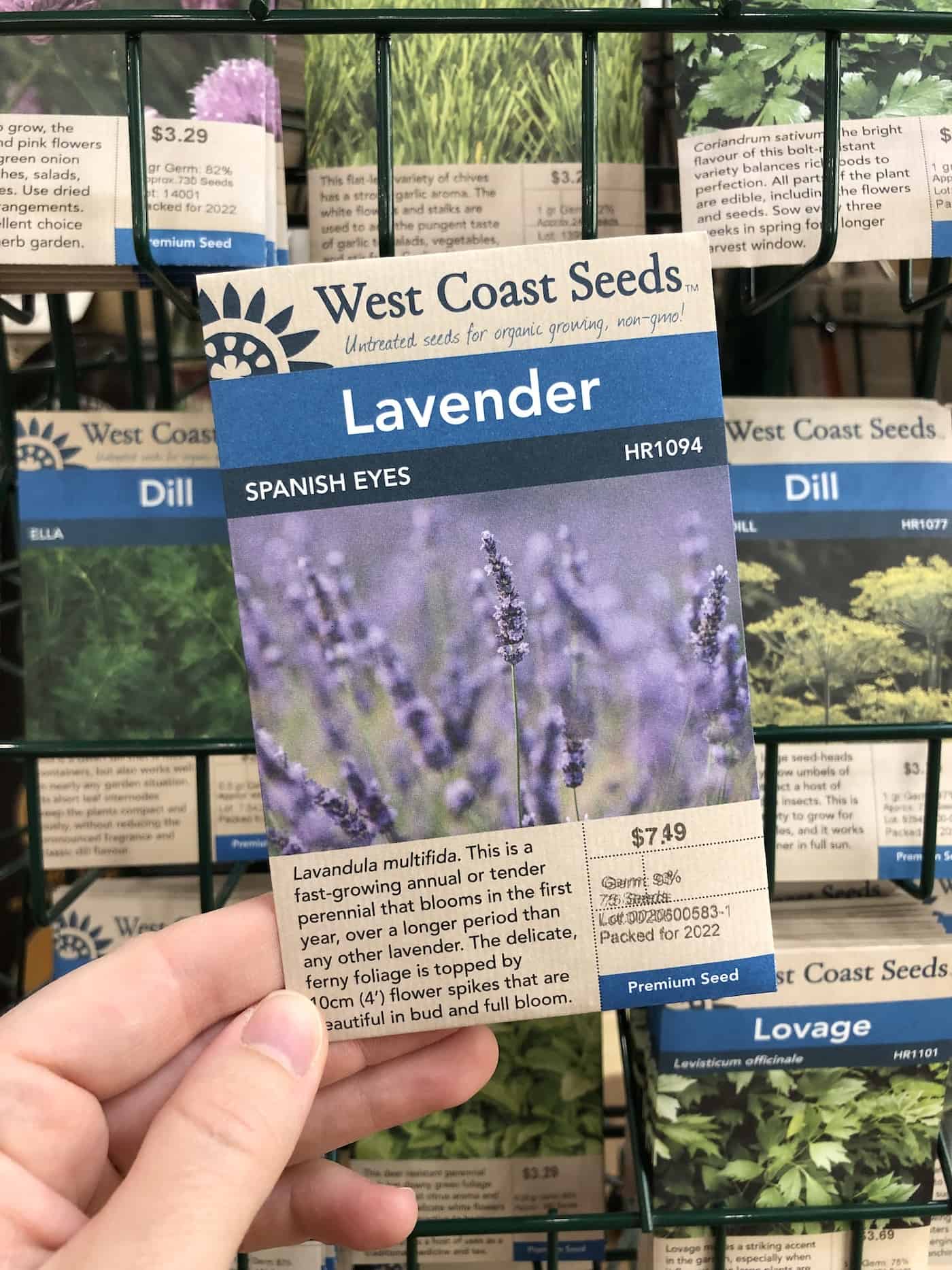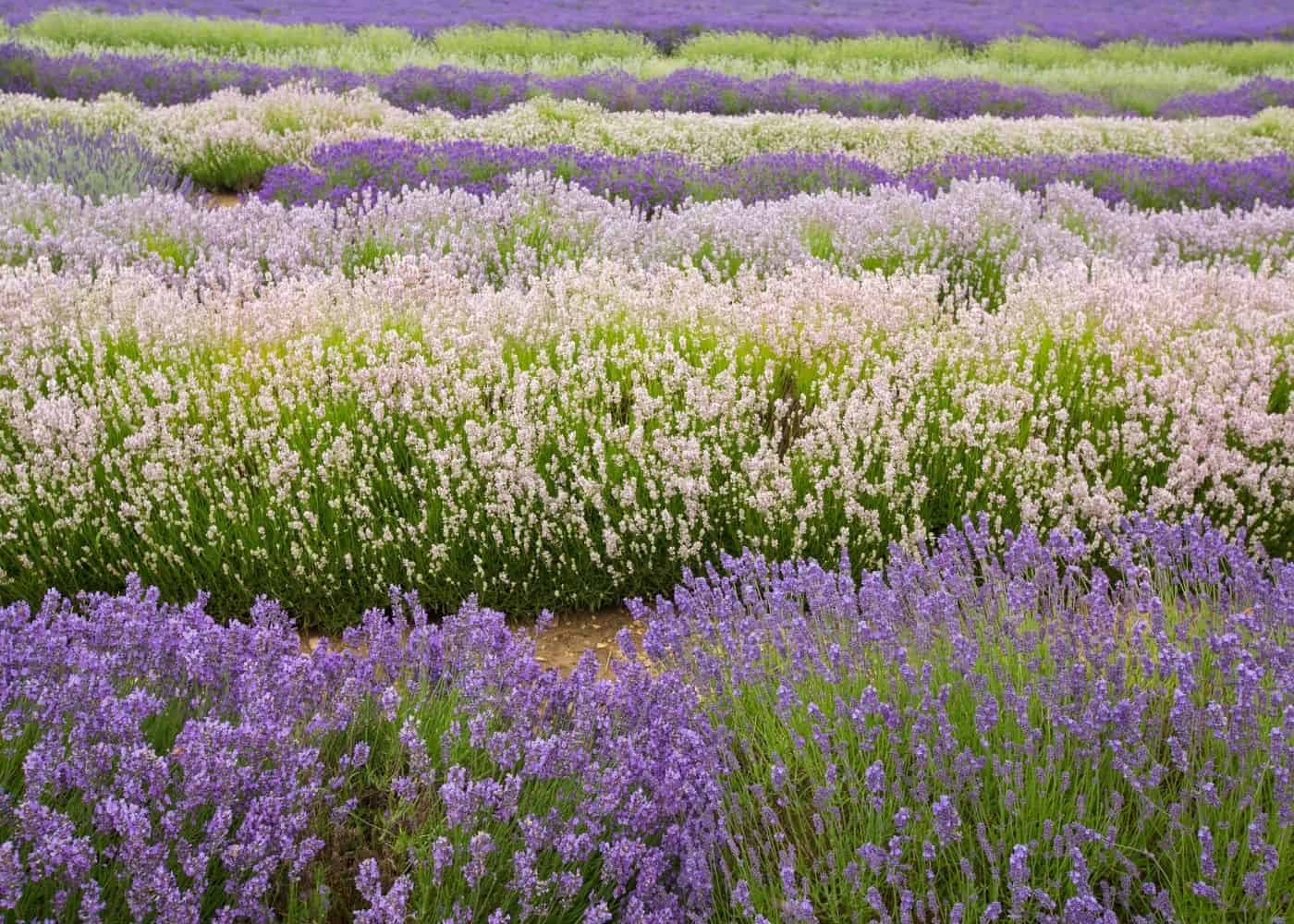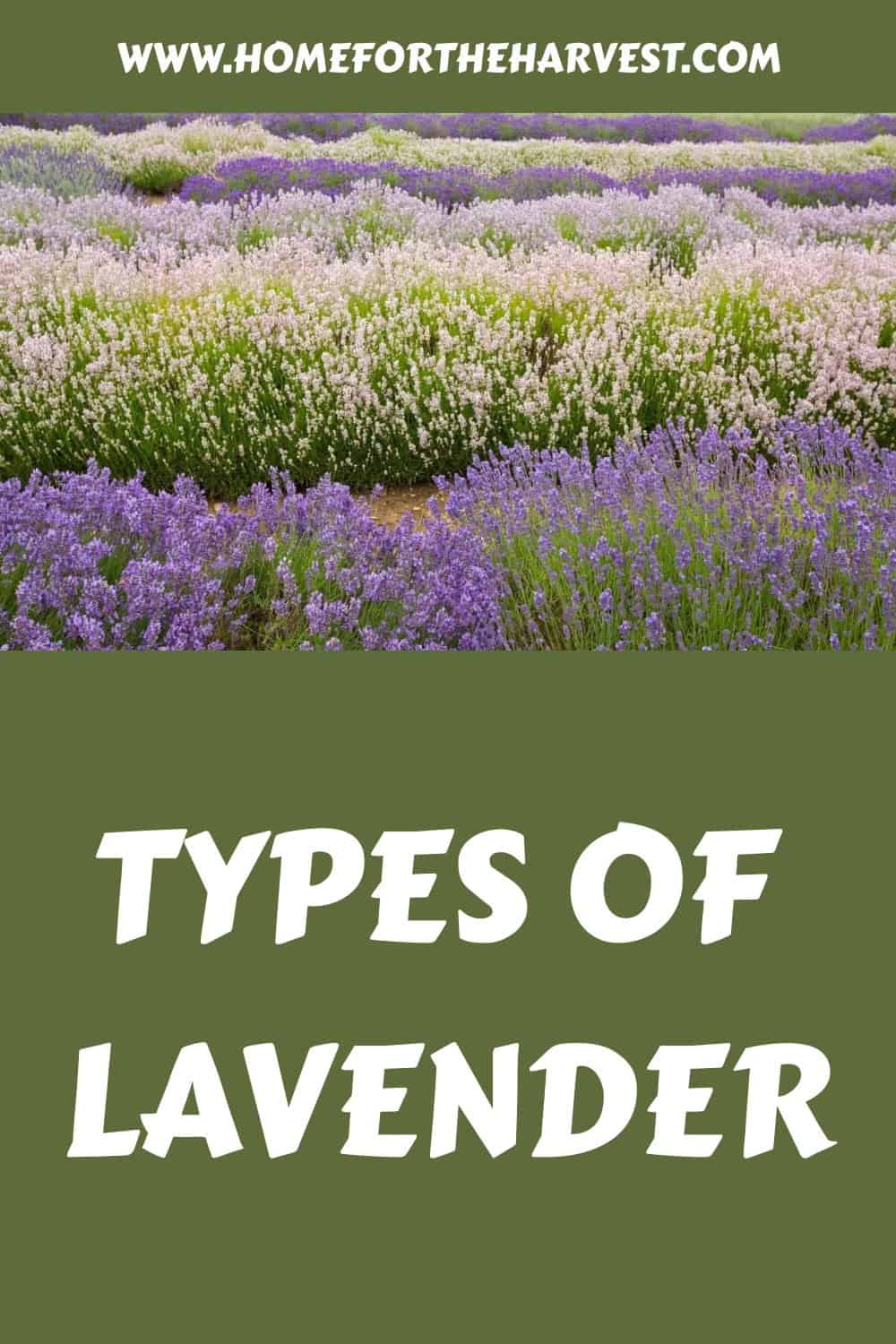There are over 30 lavender species, but only a few of these are commonly cultivated. The most common types of lavender are English, Spanish, French Portuguese, and lavandin. Modern cultivation has hundreds of different named varieties (cultivars), most of which fall into one of these five main categories.
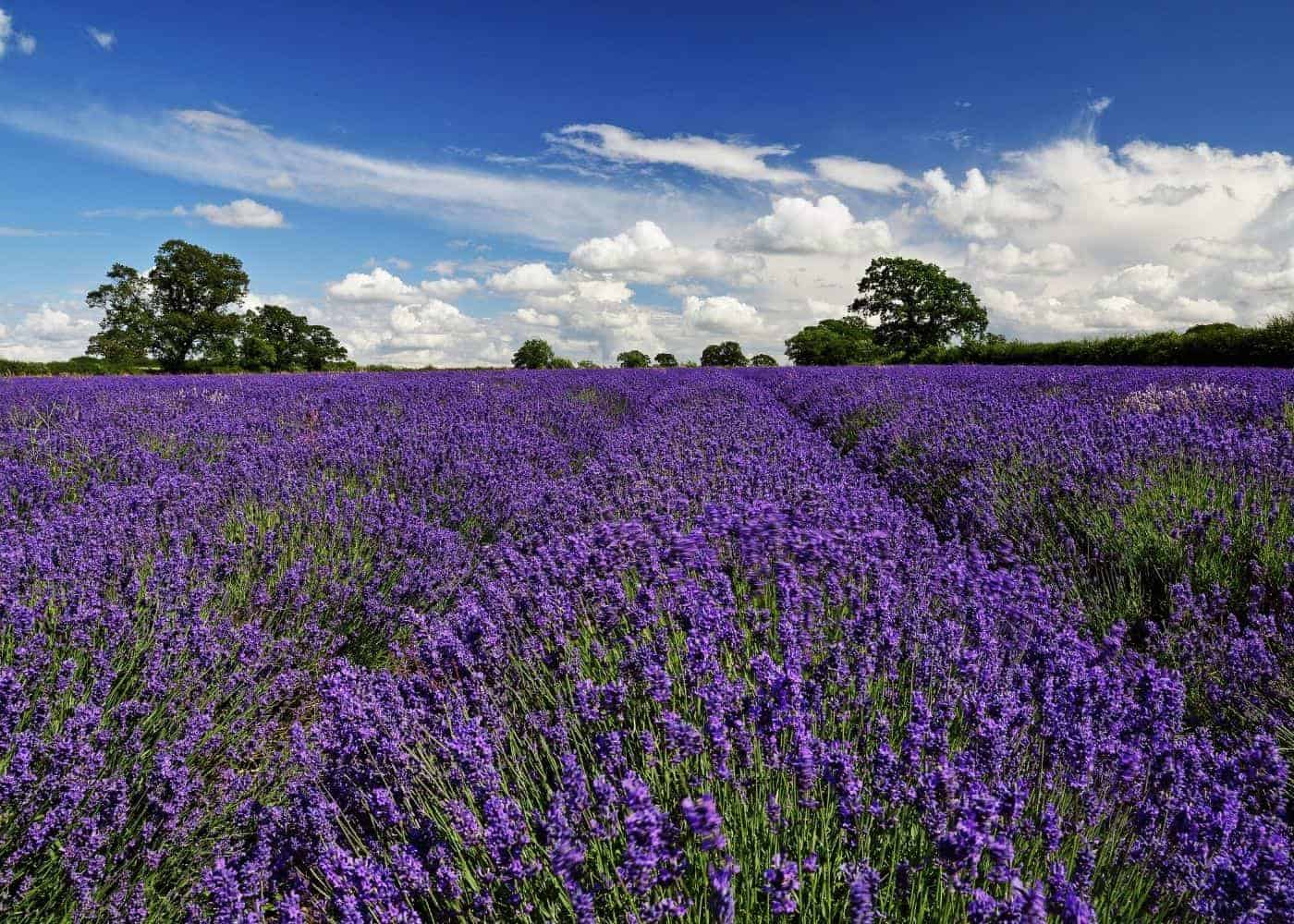
1. English lavender (Lavandula angustifolia)
English lavender (Lavandula angustifolia) is the most popular type of lavender. English lavender has a strong and pure floral lavender scent that makes it the preferred type for lavender essential oil and other scented products like wreaths and lavender wands. English lavender is also the most cold-hardy type of lavender, with a growing range of Zones 5-9. Lastly, preferred culinary varieties of lavender are typically English cultivars.
English lavender (Lavandula angustifolia) is native to high-altitude areas in the South of France, as well as parts of Spain and Italy. English Lavender (Lavandula angustifolia) is extensively cultivated in the famous lavender fields of Provence, France. English lavender is not native to England but has been grown there in herb gardens for centuries.
English lavender (Lavandula angustifolia) is a short shrub with thin spikes of purple flowers. It typically blooms in early-mid summer (June or July) over a period of about 3-4 weeks. Other common names for English lavender (Lavandula angustifolia) include garden lavender, common lavender, Bulgarian lavender, narrow-leaved lavender, and fine lavender.
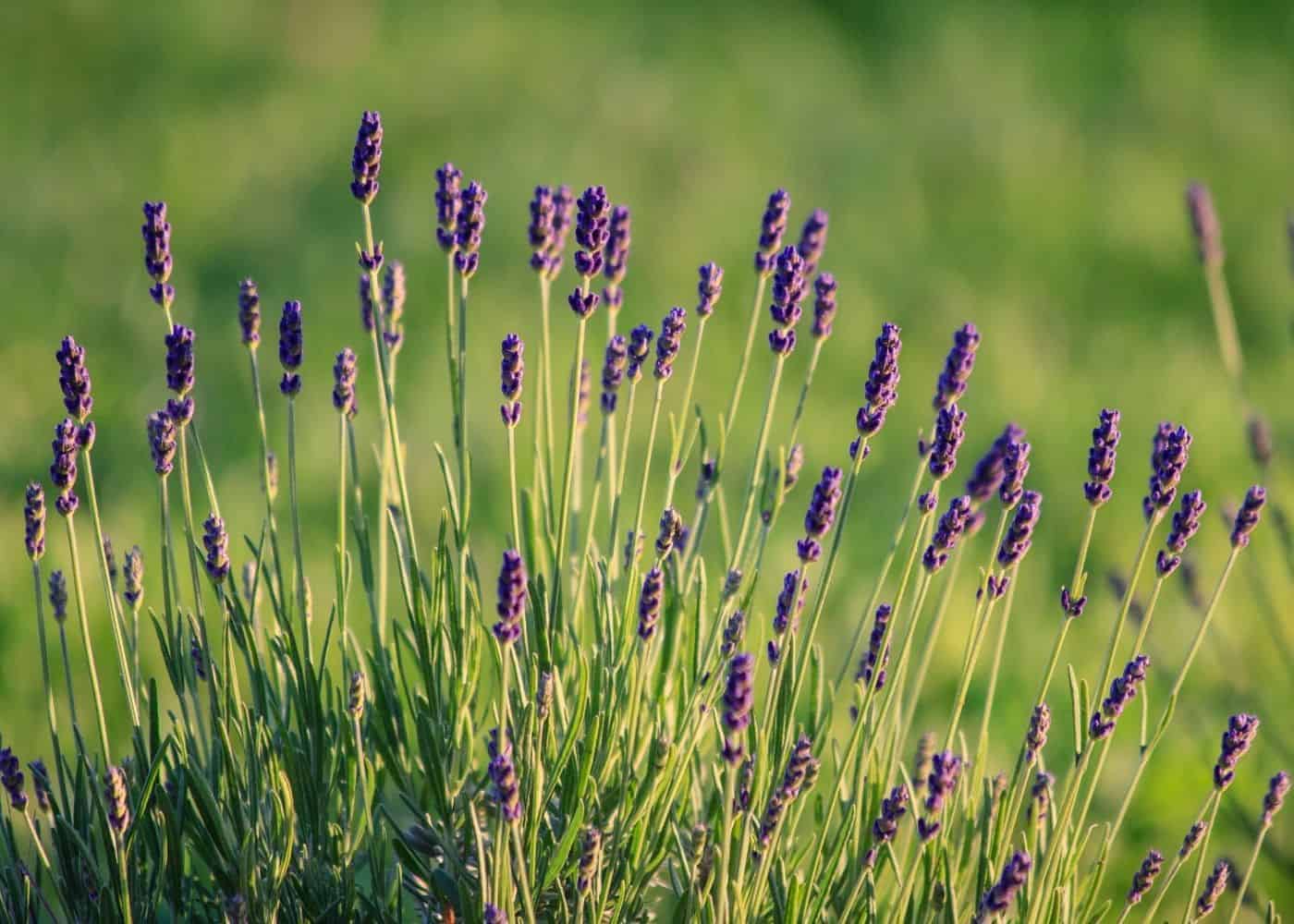
Popular varieties of English lavender (Lavandula angustifolia)
- Hidcote lavender
- Munstead lavender
- Royal Velvet lavender
- Melissa lavender
- Buena Vista lavender
- Violet Intrigue lavender
- Blue Cushion lavender
- Miss Katherine lavender
- Nana Alba lavender
- Imperial Gem lavender
- Thumbelina Leigh lavender
- Rosea lavender
- Hidcote Pink lavender
- Loddon Blue lavender
“Only some lavenders are suitable for culinary purposes, e.g. for making biscuits, cakes, ice cream and flavored icing sugar. Two examples are Lavandula angustifolia ‘Avice Hill’ and the true form of Lavandula angustifolia ‘Munstead’.”
Lavender: The Grower’s Guide, by Virginia McNaughton
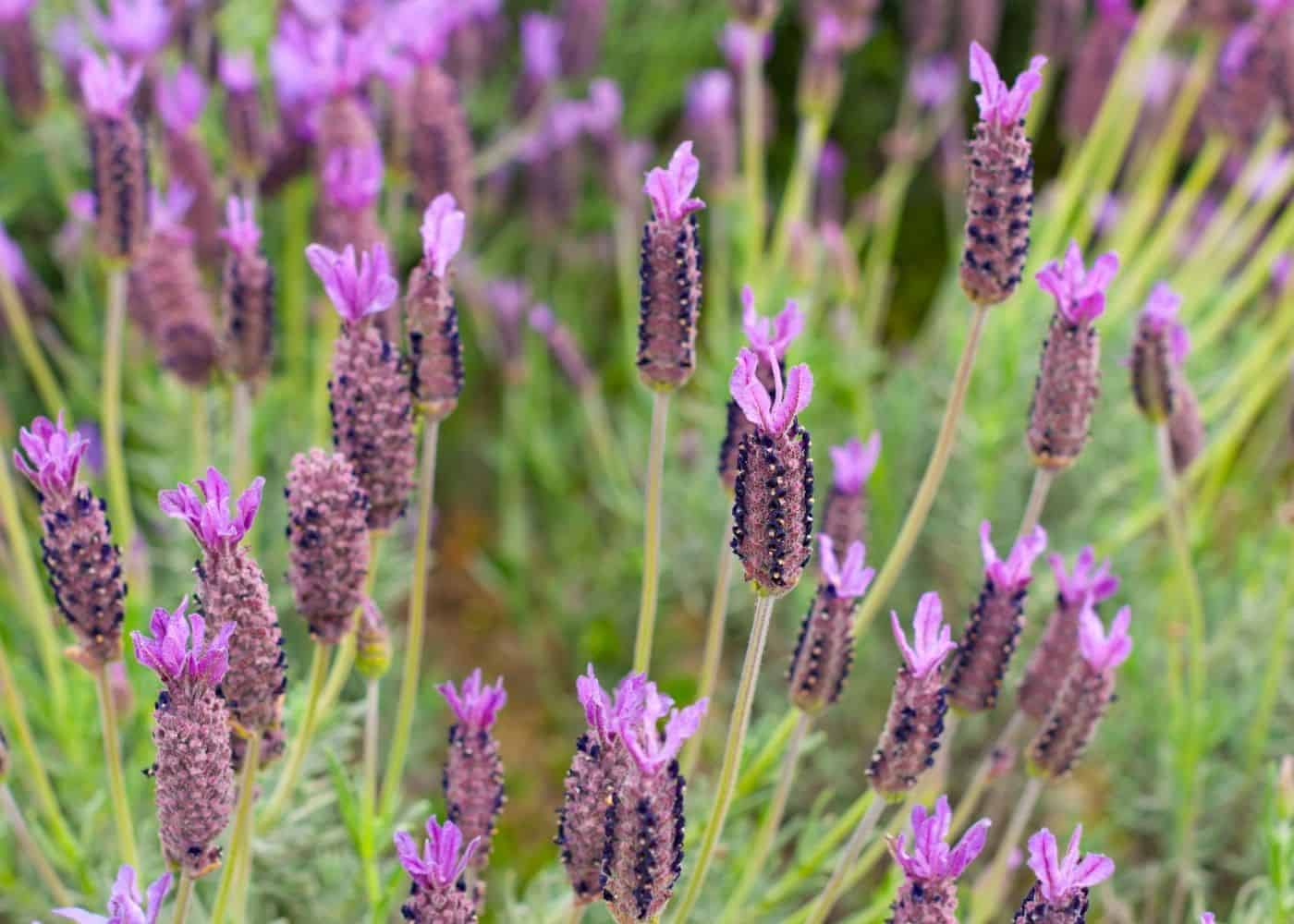
2. Spanish lavender (Lavandula stoechas)
Spanish lavender (Lavandula stoechas) is another popular strongly-scented type of lavender. It is known for its petal-topped flowers (often called “rabbit’s ears”), strong scent, and historic use in lavender oil production, ancient Greek medicine, and in the Four Thieves Vinegar of the Middle Ages. Spanish lavender is not used for culinary purposes but makes a wonderful ornamental plant in the garden.
Spanish lavender is native to the Mediterranean region, including Spain, Portugal, Turkey, and North Africa. Lavandula stoechas is named after the Stoechades Islands (Îles d’Hyères) off the south of France.
Spanish lavender grows well in warm climates with hot, dry summers, where it typically flowers in late spring. It grows best in the warm climates of Zones 8-9 and is somewhat more tolerant of humid conditions than English lavender.
Spanish lavender plants tend to grow taller than most other types of lavender, commonly growing to over 3 feet tall. Spanish lavender can be used in hedges, although the resulting hedge will be taller than a hedge of English lavender.
Flower spikes are compact, have a strong fragrance, and are highly attractive to pollinators like butterflies and bees due to the ornamental bracts atop the spikes. Other common names for Spanish lavender (Lavandula stoechas) include topped lavender, butterfly lavender, and Italian lavender.
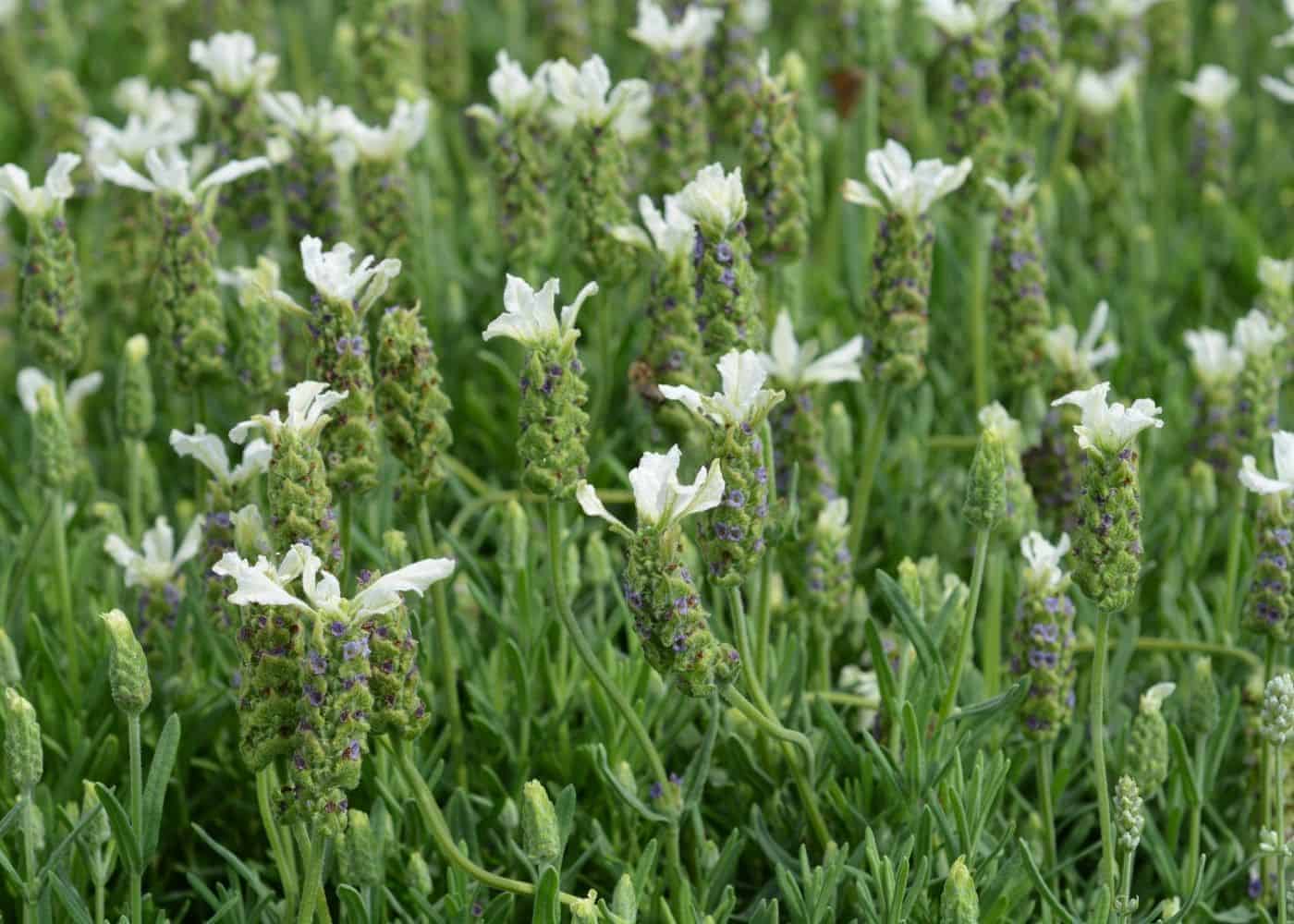
Popular varieties of Spanish lavender (Lavandula stoechas)
- Otto Quast lavender
- Ballerina lavender
- Blueberry Ruffles lavender
- Fairy Wings lavender
- Van Gogh lavender
- Regal Splendor lavender
- Plum lavender
- Tickled Pink lavender
- Wine lavender
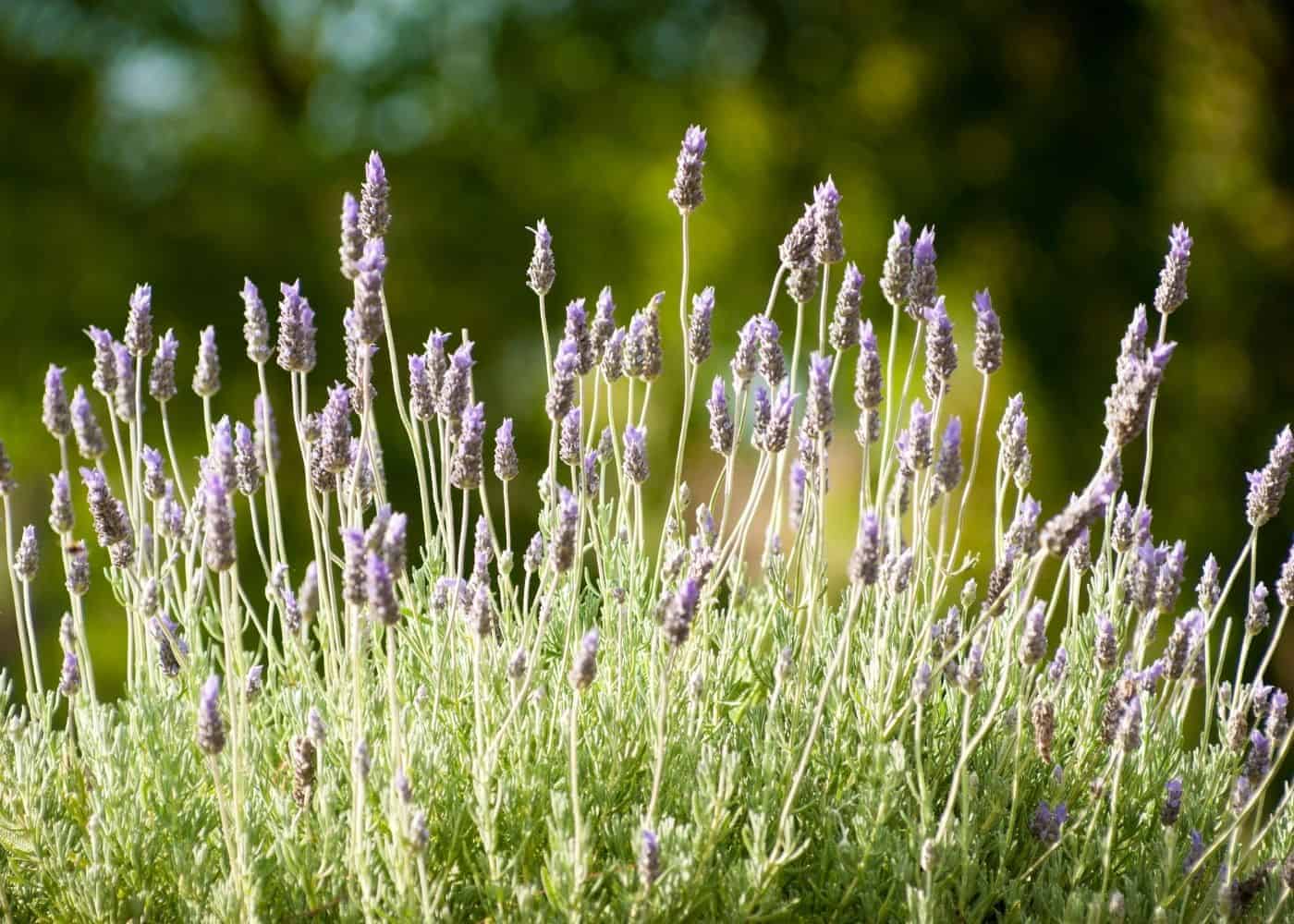
3. French lavender (Lavandula dentata)
French lavender (Lavandula dentata) is a specialty lavender type grown for its ornamental value rather than for scent or culinary purposes. French lavender is known for its petal-topped compact purple flowers, long bloom time, and unique textured leaves (see photo below). French lavender is not as strongly scented as English lavender or Spanish lavender, and the fragrance is not as sweet.
French lavender(Lavandula dentata) is native to parts of Spain, North Africa, Madeira (Portugal), and Cape Verde. French lavender is hardy in Zones 8-9 and grows best in warm climates with wet winters and dry, sunny summers.
This low-maintenance plant is easy to care for in the garden, flowering from early summer to fall. While both English and Spanish lavender require annual hard pruning, French lavender can be left happily alone in the garden with just a bit of deadheading.
French lavender is commonly used in floral arrangements and in ornamental potpourri. French lavender is not used in culinary applications or for the production of lavender oil. Other common names for French lavender (Lavandula dentata) include toothed lavender and fringed lavender (after the dentate/toothed edges of the gray-green foliage).
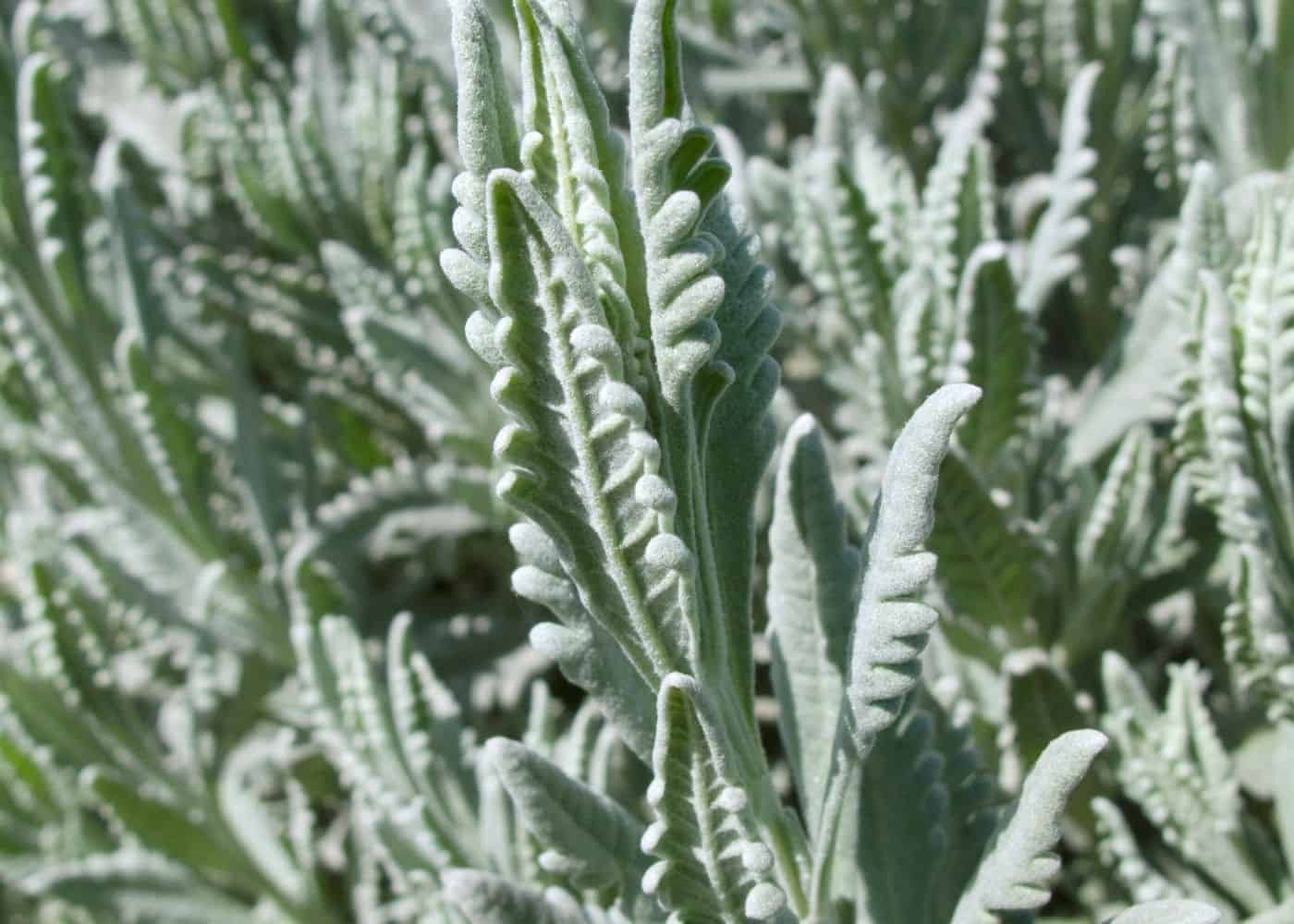
Popular varieties of French lavender (Lavandula dentata)
- Allwood lavender
- Lambikins lavender
- Linda Logon lavender
- Ploughman’s Blue lavender
- Pure Harmony lavender
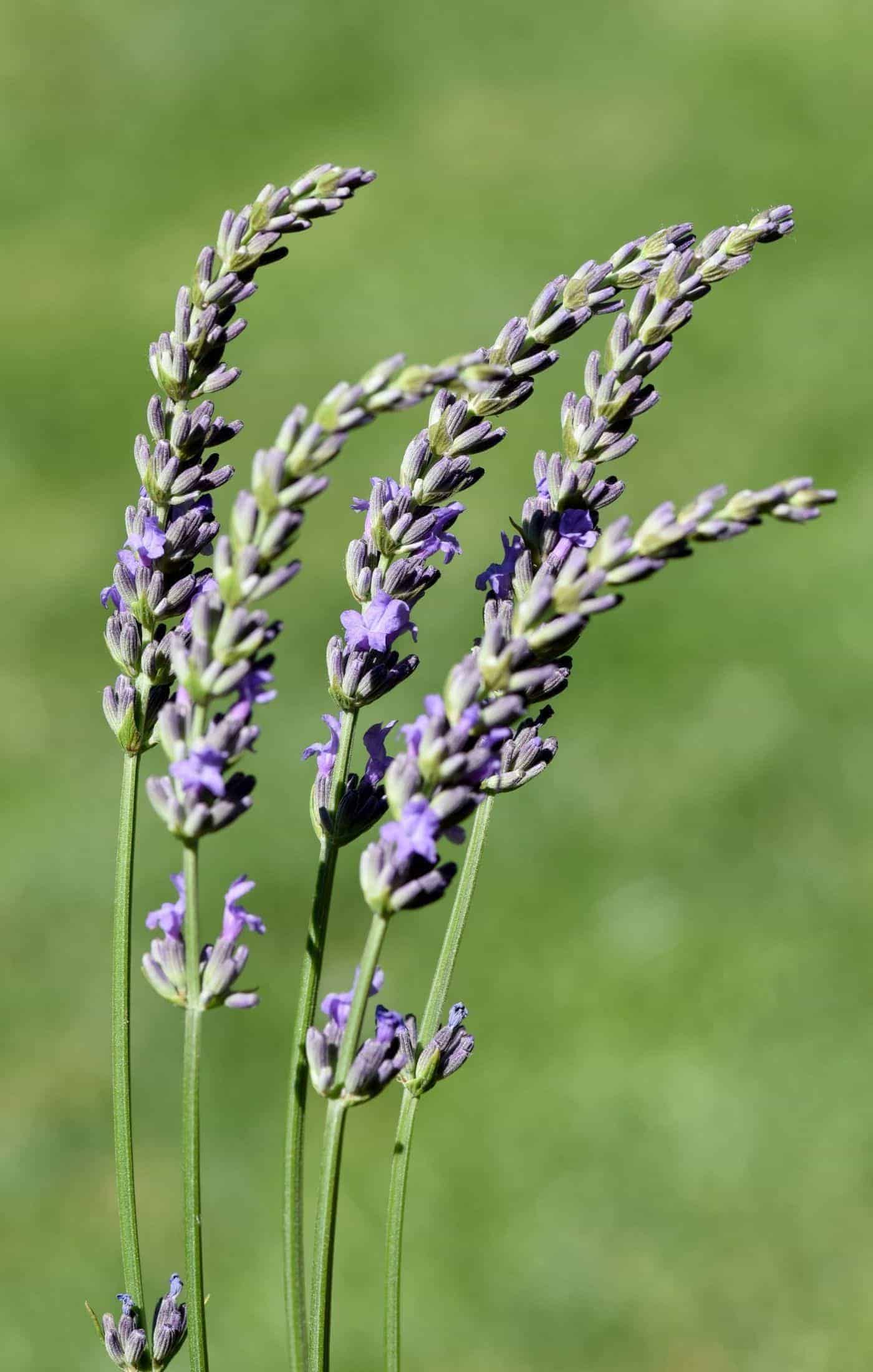
4. Portuguese lavender (Lavandula latifolia)
Portuguese lavender (Lavandula latifolia) is a specialty type of lavender not commonly grown in gardens. This type grows wild in dry Mediterranean climates and is very tolerant of heat. Portuguese lavender is farmed for its lavender oil (oil of aspic), which is used in commercial factory applications, including in varnish, soap, and disinfectant.
Portuguese lavender (Lavandula latifolia) is native to low-altitude southern areas of Europe, including areas of Spain, France, Italy, and the Balkans. This type of lavender flowers after most other types, typically blooming in late summer.
Portuguese lavender (Lavandula latifolia) is also called spike lavender due to its tall, thin stem shape and overall plant habit. While Portuguese lavender is not commonly grown in gardens, it has been used extensively in breeding new types of hybrid lavenders. An entire type of hybrid lavender, lavandin (Lavandula x intermedia), consists of hybrids of Portuguese lavender crossed with English lavender.
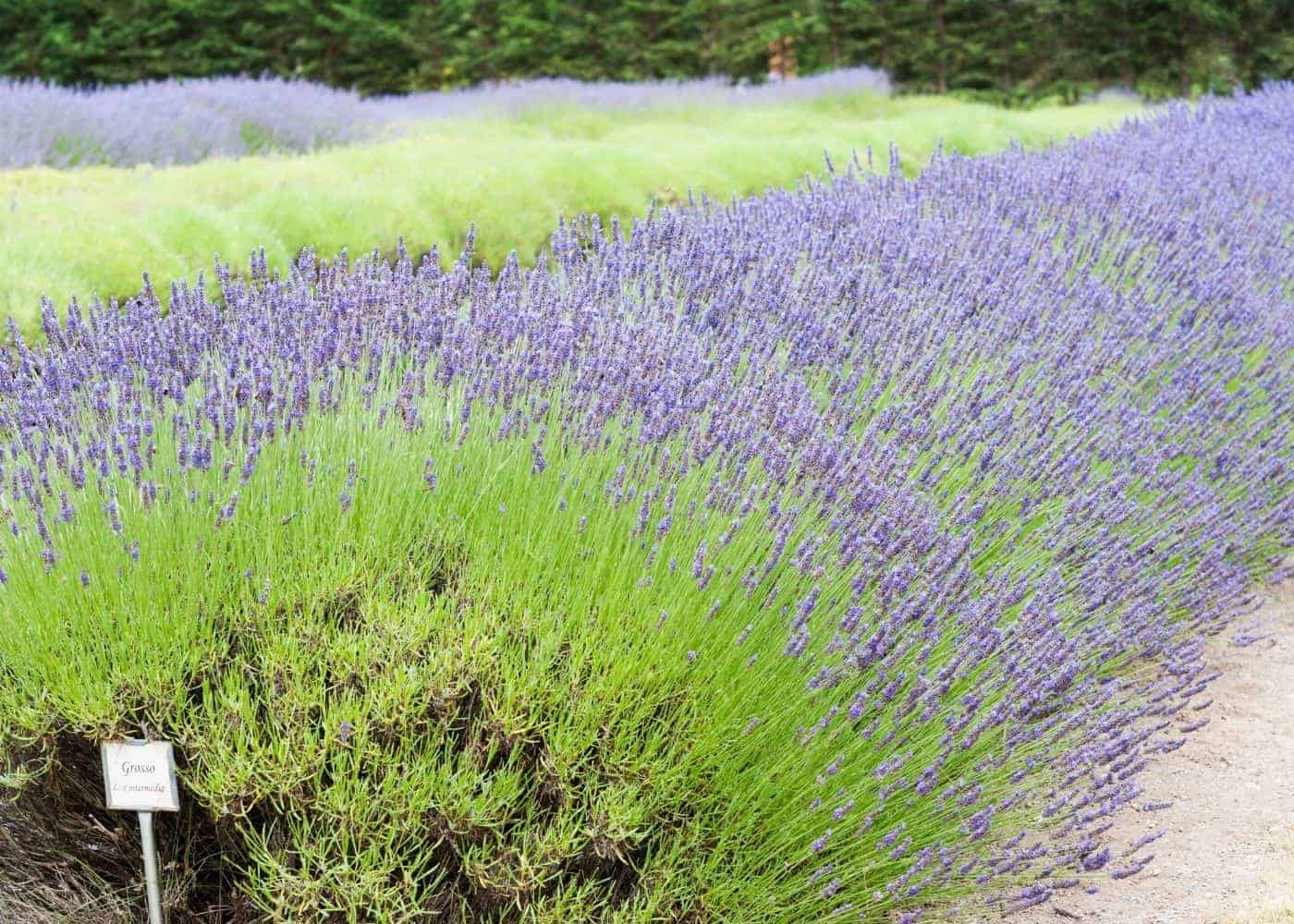
5. Lavandin (Lavandula x intermedia)
Lavandin (Lavandula x intermedia) is a hybrid of English lavender (Lavandula angustifolia) and Portuguese lavender (Lavandula latifolia). Lavandin plants are known for their tolerance to a wide range of climates, as they are very cold hardy while also being tolerant of heat. Lavandin can be grown in hardiness Zone 5-9. All lavandin plants are sterile crosses of English lavender and Portuguese lavender.
The flower head shape of lavandin plants typically resembles those of English lavender. Lavandin plants typically grow quite long stems for their flower spikes, making lavandins taller in the garden than traditional English lavender. Lavandin flowers about 2-4 weeks after English lavender (but before Portuguese lavender). Most types of lavandin have a strong lavender aroma.
Like other types of lavender, lavandin grows best in full-sun areas with good drainage and can become drought-tolerant once established. Most varieties have a lilac purple lavender bloom color, but there are some slightly pink varieties, several violet-blue types, popular white varieties, and quite a few dark purple flower varieties.
Popular varieties of lavandin
- Grosso lavender
- Hidcote Giant Lavender
- Fred Boutin Lavender
- Dutch Lavender
- Super Lavender
- Seal Lavender
- Grappenhall Lavender
- Alba Lavender
- Abrialii Lavender
- Bogong Lavender
- Impress Purple Lavender
